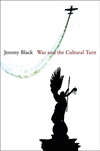Kitabı oku: «Historia de la estrategia militar», sayfa 4
Habría que añadir un nivel antropológico y mencionar la importancia a lo largo del tiempo de los pueblos nómadas y seminómadas[69]. Una de sus estrategias centrales fue el saqueo, una estrategia en la que además se diluyen las distinciones entre los movimientos estratégicos, operativos y tácticos. El saqueo es igualmente un aspecto de lo que se ha denominado «guerra de guerrillas», una forma de conflicto a la que le falta un estudio sistemático, especialmente al nivel estratégico. Lo mismo cabe decir de las operaciones a pequeña escala que a veces emprenden las fuerzas regulares en las sociedades establecidas, que pueden llegar a socavar o revertir las consecuencias de la victoria en las grandes batallas, que es la que suele recabar toda la atención[70]. Las operaciones de saqueo no pueden ser desdeñadas y tenidas por menos significativas solo porque difieran de las operaciones de las grandes unidades regulares, un argumento que cabe extender a la consideración de la estrategia. Además, este tipo de situaciones son dinámicas a todos los niveles. Las tareas y posibilidades que afrontan los combatientes están sujetas a la percepción, las contingencias y la prueba y error, aspectos todos dignos de estudio.
Es muy pertinente considerar los paralelismos a lo largo del tiempo sin asumir automáticamente que existió una mejora gracias a la modernización, y sin asumir que la conducta apropiada, no digamos la mejora, requirieron el lenguaje formal y el proceso de la estrategia. De hecho, asumir que el lenguaje formal de la estrategia es necesario o de ayuda es, de suyo, una «estrategia» de exposición académica y presentación militar coherente y repetida, aunque carezca de fundamento. En vez de constituir un indisputable avance, la teoría de la modernización ha creado muchas ilusiones analíticas en los historiadores y los comentaristas militares, que en ambos casos han procurado apuntalar teóricamente cierta coherencia en torno a la idea de desarrollo, enlazando aparentemente sin conflicto pasado y presente. Es tiempo de que la estrategia como práctica quede liberada de tales ilusiones.
CONCEBIR EL TÉRMINO
Centrándonos en el siglo XVIII, en el que el término «estrategia» se forjó en Europa occidental, es posible apuntar a una serie de nuevas circunstancias y requisitos y sugerir que estos hicieron que fuese práctica y hasta necesaria una nueva terminología. Esta perspectiva bien podría enfocarse en los nuevos lenguajes de clasificación y análisis asociados con la Ilustración, el movimiento intelectual de la élite dirigente europea de dicho periodo, o en un espectro más amplio de proyección del poder de los poderes europeos de entonces, particularmente Gran Bretaña y Francia, o en la necesidad en Europa de adaptarse a la dinámica de la nueva geopolítica creada por el auge de Rusia y Prusia. Alternativamente, el enfoque podría ser más estrecho, por ejemplo, en la combinación de la crisis de poder y autoconfianza en Francia tras las repetidas derrotas en la guerra de los Siete Años (1756-1763) y los intentos de los comentaristas franceses de aportar soluciones. Estos intentos incluyeron echar la vista atrás en busca de ejemplos clásicos para tratar de elucidar una tipología general de la guerra. El empleo moderno del término «estrategia» tuvo su origen en estos comentaristas. Se trata de explicaciones que se superponen entre sí, entre otras cosas porque Francia fue el centro mundial de la Ilustración.
Cabe expandir este relato hasta encontrar este fermento ilustrado contribuyendo a dar forma a las novedades que trajo el conflicto revolucionario francés que se desató en 1792, y seguir con los desarrollos que trajo Napoleón. A su vez, lo que aportó este último, de cosecha propia y por parte de quienes se le opusieron, tanto en su tiempo como posteriormente, también explicará muchas cosas de las ocurridas en el siglo XIX en cuanto a la estrategia, prefigurando a Clausewitz, como en su momento veremos.
En 1771, una traducción de la obra emperador bizantino León VI, Tactica, apareció en francés, publicada en París, bajo el título Institutions militaires de l’Empereur Léon le Philosophe. La traducción era obra del teniente coronel Paul-Gédéon Joly de Maïzeroy, que empleó el término «la stratégique» para referirse al arte del mando. Definió «la stratégique» como el arte de mandar empleando todos los medios para movilizar todos los elementos bajo el control del mando con fin de alcanzar el éxito. Con esto reemplazaba el uso del término «dialéctica» por parte del propio Maïzerov en su Traité de tactique, publicado en sus Essais militaires en 1762. En esta obra se había referido a «la dialectique militaire», que describía como hacer planes en campaña y dirigir operaciones.
En 1777, Maïzeroy presionó para que se publicase su obra Théorie de la guerre, où l’on expose la constitution et formations de l’Infanterie et de la Cavaleries, leurs manoeuvres élémentaires, avec l’application des principes à la grande tactique, suivie de demonstrations sur la stratégique. El influyente Journal Sçavans, en su número de noviembre, dijo que el libro era científico en su intención y matemático en su perspectiva. El libro trataba en parte de la «stratégie», definida como el arte de conducir la guerra y dirigir todas las operaciones. En la revista se decía que Maïzeroy había intentado aportar matemáticas al asunto, aunque también señalaba que en la práctica el planteamiento dependía de coyunturas, especialmente de las opiniones políticas de los príncipes, y de las que hacían que los generales prefiriesen unas operaciones a otras. En su introducción, Maïzeroy se refería al requisito de establecer una teoría que pudiera servir de guía.
El término «estrategia», no obstante, no tenía por entonces un significado o uso que llevase a considerarla una solución para las acuciantes necesidades de la guerra. Además, hay escasos signos de que la palabra recién llegada alterase la práctica o el pensamiento en este periodo, o que ni siquiera fuese tenida en cuenta a este respecto. Con todo, como se ha dicho, eso no significaba que no existiese una dimensión estratégica de la actividad militar[71].
[1] Véase, por ejemplo, A. J. ECHEVARRIA, Military Strategy: A Very Short Introduction. Oxford, 2017.
[2] G. J. BRYANT, The Emergence of British Power in India, 1600–1784: A Grand Strategic Interpretation. Woodbridge, Suffolk, 2013, p. 321. En cuanto a una definición y un papel distintos para la «gran estrategia», véase P.D. MILLER, “On Strategy, Grand and Mundane”, Orbis, 60 (2016), pp. 237–47.
[3] W. E. LEE, Waging War: Conflict, Culture, and Innovation in World History, Oxford, 2016, p. 407.
[4] T. KANE y D. LONSDALE, Understanding Contemporary Strategy. Abingdon, 2012, p. 26.
[5] Citado en I. POPESCU, Emergent Strategy and Grand Strategy: How American Presidents Succeed in Foreign Policy. Baltimore, MD, 2017, p. 1.
[6] J. M. DUBIK, Just War Reconsidered: Strategy, Ethics, and Theory. Lexington, KY, 2016.
[7] P. CRIMMIN, “The Channel’s Strategic Significance: Invasion Threat, Line of Defence, Prison Wall, Escape Route”. Studies on Voltaire and the Eighteenth Century, 292 (1991), pp. 67–79; L. WHITE, “Strategic Geography and the Spanish Habsburg Monarchy’s Failure to Recover Portugal, 1640–1668”. Journal of Military History, 71 (2007), pp. 373–410.
[8] A. J. STRAVERS, “Partisan Conflict over Grand Strategy in Eastern Europe, 2014–2017”. Orbis, 62 (2018), pp. 541–56; N.D.F. Allen, “Assessing a Decade of US Military Strategy in Africa”, ibid., pp. 655–69, cita en la p. 657.
[9] Brian COLLIER a Black, 23 de julio de 2009, email.
[10] The Economist, 30 de noviembre de 2018, p. 29.
[11] The Times, 3 de diciembre de 2018.
[12] J. A. Downie, “Polemical Strategy and Swift’s The Conduct of the Allies”, Prose Studies, 4 (1981), pp. 134–45.
[13] Wall Street Journal, 19 de octubre de 2018.
[14] M. T. Owens, “Editor’s Corner”, Orbis, 58 (2014), p. 162.
[15] L. SONDHAUS, Strategic Culture and Ways of War. London, 2006; S. POORE, “What is the Context? A Reply to the Gray-Johnston Debate on Strategic Culture”, Review of International Studies, 29 (2003), pp. 279–84; D.P. ADAMSKY, American Strategic Culture and the US Revolution in Military Affairs, Oslo, 2008.
[16] S. W. KHAN, Haunted by Chaos: China’s Grand Strategy from Mao Zedong to Xi Jinping. Cambridge, MA, 2018, p. 251; A. M. TABATABAI, No Conquest, No Defeat: Iran’s National Security Strategy. London, 2019.
[17] J. SNYDER, The Soviet Strategic Culture: Implications for Limited Nuclear Operations. Santa Monica, CA, 1977.
[18] T. H. ETZOLD y J.L. GADDIS (eds.), Containment: Documents on American Policy and Strategy, 1945–1950. New York, 1978, pp. 84–90; J.L. GADDIS, The United States and the Origins of the Cold War, 1941–1947. New York, 1972; J.L. GADDIS, George F. Kennan: An American Life. New York, 2011.
[19] A. WENDT, “Anarchy Is What States Make of It: The Social Construction of Power Politics”, International Organization, 46 (1992), pp. 391–425.
[20] K. BOOTH, Strategy and Ethnocentrism. London, 1979; C.G. REYNOLDS, “Reconsidering American Strategic History and Doctrines”. En History of the Sea: Essays on Maritime Strategies. Columbia, SC, 1989; C.S. GRAY, “Strategic Culture as Context: The First Generation of Theory Strikes Back”. Review of International Studies, 25 (1999), pp. 49–70; R.W. BARNETT, Navy Strategic Culture: Why the Navy Thinks Differently. Annapolis, MD, 2009, p. 130.
[21] H. A. SIMON, Models of Bounded Rationality. Cambridge, MA, 1982; H. CROWTHER-HEYCK, Herbert A. Simon: The Bounds of Reason in America. Baltimore, MD, 2005.
[22] J. P. CLARK, Preparing for War: The Emergence of the Modern US Army, 1815–1917. Cambridge, MA, 2017.
[23] A. FORREST, The Legacy of the French Revolutionary Wars: The Nation-in-Arms in French Republican Memory. Cambridge, 2009.
[24] R. I. FROST, análisis de J.P. LEDONNE, The Grand Strategy of the Russian Empire, 1650–1831. Oxford, 2004, English Historical Review, 121 (2006), p. 850.
[25] LEDONNE, The Grand Strategy of the Russian Empire, pp. vii–viii.
[26] A. JOHNSTON, “Thinking about Strategic Culture”. International Security, 19 (1995), p. 35.
[27] W. MARTEL, Grand Strategy in Theory and Practice: The Need for an Effective American Foreign Policy. New York, 2015.
[28] P.H. Wilson, “Strategy and the Conduct of War”. En O. ASBACH y P. SCHRÖDER (eds.). Ashgate Research Companion to the Thirty Years’ War, Farnham, 2013, p. 277.
[29] E. A. LUND, War for the Every Day: Generals, Knowledge, and Warfare in Early Modern Europe, 1680–1740. Westport, CT, 1999. T.C.W. BLANNING, Frederick the Great: King of Prussia. London, 2015, p. 226, escribe con toda franqueza: «Se creó un equipo del general».
[30] P. J. SPEELMAN (ed.), Henry Lloyd and the Military Enlightenment: The Works of General Lloyd. Westport, CT, 2005, p. 13.
[31] Sobre la «naturaleza mimética de la Guerra», véase R. Girard, R. P. HARRISON y C. HAVEN, “Shakespeare: Mimesis and Desire”. Standpoint, Dec. 2018–Jan. 2019, p. 63.
[32] K. M. SWOPE, “Manifesting Awe: Grand Strategy and Imperial Leadership in the Ming Dynasty”. Journal of Military History, 79 (2015), p. 605.
[33] D. A. GRAFF, “Dou Jiande’s Dilemma: Logistics, Strategy, and State Formation in Seventh Century China”. En H. VAN DE VEN (ed.), Warfare in Chinese History. Leiden, 2000, pp. 77–105; D. TWITCHETT, “Tibet in Tang Grand Strategy”, ibid., pp. 106–79; P.C. PERDUE, “Culture, History, and Imperial Chinese Strategy: Legacies of the Qing conquests”, ibid., pp. 252–87.
[34] V. D. HANSON, A War like No Other: How the Athenians and Spartans Fought the Peloponnesian War. New York, 2005.
[35] J. E. LENDON, Song of Wrath: The Peloponnesian War Begins. New York, 2010; P. LOW, Interstate Relations in Classical Greece: Morality and Power. Cambridge, 2007; P. HUNT, War, Peace, and Alliance in Demosthenes’ Athens. Cambridge, 2010.
[36] El clásico de E.N. LUTTWAK, The Grand Strategy of the Roman Empire: From the First Century AD to the Third. Baltimore, MD, 1976, es criticado en B. ISAAC, The Limits of Empire: The Roman Army in the East. 2.ª ed., Oxford, 1992, pp. 372–418, y, por el contrario, es apoyado por E. L. WHEELER, “Methodological Limits and the Mirage of Roman Strategy”, Journal of Military History, 57 (1993), pp. 7–41, 215–40; E. L. WHEELER, “Rome’s Dacian Wars: Domitian, Trajan, and Strategy on the Danube”, Journal of Military History, 74 (2010), pp. 1185–1227, 75 (2011), pp. 191–219; M. PAVKOVIC, “Roman Grand Strategy”, Military Chronicles, 1 (2005), pp. 14–30; y K. KAGAN, “Redefining Roman Grand Strategy”, Journal of Military History, 70 (2006), pp. 333–62. Véase el más reciente texto de Y. LE BOHEC, La Guerre romaine: 58 avant J.-C.–235 après J.-C. Paris, 2014; G. TRAINA, “La Tête et la main droite de Crassus: quelques remarques supplémentaires”. En A. ALLÉLY (ed.), Corps au supplice et violences de guerre dans l’Antiquité. Bordeaux, 2014, pp. 95–8.
[37] L. LORETO, La grande strategia di Roma nell’età della prima guerra punica (ca.273–ca.229 a. C.): l’inizio di un paradosso. Nápoles, 2007. En cuanto a la situación previa en el mundo griego, véase P.A. BRUNT, “The Aims of Alexander”. Greece and Rome, 12 (1965), pp. 205–15; P. A. BRUNT, “Spartan Policy and Strategy in the Archidamian War”. Phoenix, 19 (1965), pp. 255–80; J. K. ANDERSON, Military Theory and Practices in the Age of Xenophon. Berkeley, CA, 1970. Para profundizar en estos factores culturales, véase J. LENDON, Soldiers and Ghosts: A History of Battle in Classical Antiquity. New Haven, CT, 2005.
[38] R. J. BREWER (ed.), Roman Fortresses and Their Legions. London, 2000; D. GRAF, “Rome and China: Some Frontier Comparisons”. En Z. VISY (ed.), Limes XIX: Proceedings of the XIXth International Congress of Roman Frontier Studies. Pécs, 2005, pp. 157–66; E. HAMMER, “Highland Fortress-Polities and Their Settlement Systems in the Southern Caucasus”. Antiquity, 88 (2014), pp. 757–74.
[39] Véase también A. ECKSTEIN, Rome Enters the Greek East: From Anarchy to Hierarchy in the Hellenistic Mediterranean, 230–170 BC. Malden, MA, 2008.
[40] S. P. MATTERN, Rome and the Enemy: Imperial Strategy in the Principate. Berkeley, CA, 1999.
[41] N. TACKETT, “The Great Wall and Conceptualizations of the Border under the Northern Song”, Journal of Song-Yuan Studies, 38 (2008), pp. 99–138.
[42] J. HALDON, Warfare, State and Society in the Byzantine World, 565–1204, London, 1999; J. SHEPARD (ed.), The Cambridge History of the Byzantine Empire. Cambridge, 2008; E.N. LUTTWAK, The Grand Strategy of the Byzantine Empire. Cambridge, MA, 2009; D.A. GRAFF, The Eurasian Way of War: Military Practice in Seventh-Century China and Byzantium, Abingdon, 2016.
[43] J. F. VERBRUGGEN, The Art of Warfare in Western Europe during the Middle Ages. Oxford, 1977, pp. 249–300; P. Contamine, La Guerre au Moyen âge, 4.ª ed. París, 1994, pp. 365–79 (versión inglesa, War in the Middle Ages, Oxford, 1986, pp. 219–28); M. PRESTWICH, Armies and Warfare in the Middle Ages: The English Experience. New Haven, CT, 1996; F. Garcia Fitz, “¿Hubo estrategia en la Edad Media? A propósito de las relaciones castellano-musulmanas durante la segunda mitad del siglo XIII”. Revista da Faculdade de Letras: História, series 2, vol. 15 (1998), pp. 837–54; B.S. BACHRACH, Early Carolingian Warfare: Prelude to Empire. Philadelphia, PA, 2001, pp. 202–42; J. W. HONIG, “Reappraising Late Medieval Strategy: The Example of the 1415 Agincourt Campaign”. War in History, 19 (2012), pp. 123–51; J. B. GILLINGHAM, “A Strategy of Total War? Henry of Livonia and the Conquest of Estonia, 1208–1227”. Journal of Medieval Military History, 15 (2017). Sobre el número especial de Medieval Military History en el que se trata la importancia de la estrategia, véase el volumen 15 (2017). Sobre Pere, véase J. BLACK, Geopolitics and the Quest for Dominance. Bloomington, IN, 2016, pp. 38–9.
[44] G. A. LOUD, “Some Reflections on the Failure of the Second Crusade”. Crusades, 4 (2005), pp. 10–14.
[45] C. J. ROGERS, War Cruel and Sharp: English Strategy under Edward III, 1327–1360. Woodbridge, Suffolk, 2000; C. J. ROGERS, Essays on Medieval Military History: Strategy, Military Revolutions, and the Hundred Years War. Farnham, 2010; C. J. ROGERS, “Medieval Strategy and the Economics of Conquest”. Journal of Military History, 82 (2018), pp. 709–38.
[46] J. J. L. GOMMANS, The Rise of the Indo-Afghan Empire, c.1710–1780. Leiden, 1995, pp. 136–42.
[47] J. WATERSON, The Knights of Islam: The Wars of the Mamluks. St Paul, MN, 2007.
[48] J. E. HERMAN, Amid the Clouds and Mist: China’s Colonization of Guizhou, 1200–1700. Cambridge, MA, 2005.
[49] T. May, The Mongol Art of War: Chinggis Khan and the Mongol Military System. Yardley, PA, 2007.
[50] B. F. MANZ, The Rise and Rule of Tamerlane. Cambridge, 1989.
[51] K. CHASE, Firearms: A Global History to 1700. Cambridge, 2003, p. 51; E.L. DREYER, Zheng He: China and the Oceans in the Early Ming Dynasty, 1405–1433. New York, 2007.
[52] B. HEUSER, The Strategy Makers: Thoughts on War and Society from Machiavelli to Clausewitz. Santa Barbara, CA, 2010; B. HEUSER, The Evolution of Strategy: Thinking War from Antiquity to the Present. Cambridge, 2010.
[53] G. PARKER, The Grand Strategy of Philip II. New Haven, CT, 1998.
[54] M. RIZZO, “Sticks, Carrots, and All the Rest: Lombardy and the Spanish Strategy in Northern Italy between Europe and the Mediterranean (1550–1600)”. Cahiers de la Méditerranée, 71 (2005), pp. 146–84.
[55] E. TENACE, “A Strategy of Reaction: The Armadas of 1596 and 1597 and the Spanish Struggle for European Hegemony”. English Historical Review, 118 (2003), pp. 855–82. Véase también E. RINGMAR, Identity, Interest and Action: A Cultural Explanation of Sweden’s Intervention in the Thirty Years War. Cambridge, 1996.
[56] G. PERJÉS, “Army Provisioning, Logistics and Strategy in the Second Half of the 17th Century”. Acta Historica Academiae Scientiarum Hungaricae, 16 (1970), pp. 1–52; D.A. PARROTT, “Strategy and Tactics in the Thirty Years’ War: The ‘Military Revolution’”. En C.J. ROGERS (ed.), The Military Revolution Debate: Readings on the Military Transformation of Early Modern Europe. Boulder, CO, 1995, pp. 242–6; J. LUH, “‘Strategie und Taktik’ im Ancien Régime”. Militargeschichtliche Zeitschrift, 64 (2005), pp. 101–31; J. LUH, Ancien Régime Warfare and the Military Revolution: A Study. Groningen, 2000, p. 178.
[57] A. LAMBERT, The Crimean War: British Grand Strategy against Russia, 1853–56. 2.ª ed., Farnham, 2011.
[58] The New Encyclopaedia Britannica, XIX. Chicago, 1976, p. 558.
[59] R. F. WEIGLEY, “The American Military and the Principle of Civilian Control from McClellan to Powell”, Journal of Military History, 57 (1993); R. F. Weigley. “The Soldier, the Statesman and the Military Historian”. Journal of Military History, 63 (1999); R. H. KOHN, “Out of Control: The Crisis in Civil–Military Relations”. National Interest, 35 (1994), pp. 3–17.
[60] Sobre los problemas de evaluación e implementación, véase M. D. COHEN, J. G. MARCH y J. P. OLSEN, “A Garbage Can Model of Organizational Choice”. Administrative Science Quarterly, 17 (1972), pp. 1–25.
[61] N. HOUGHTON, “Response to the Toast to the Guests”. Livery Dinner of the Worshipful Company of Armourers and Brasiers, London, 19 de noviembre de 2015.
[62] J. FYNN-PAUL (ed.), War, Entrepreneurs, and the State in Europe and the Mediterranean, 1300– 1800. Leiden, 2014; J. BLACK, War in Europe: 1450 to the Present. London, 2016, pp. 1–10.
[63] H. STRACHAN, The Direction of War: Contemporary Strategy in Historical Perspective. Cambridge, 2013.
[64] P. CORNISH y A.M. DORMAN, “Smart Muddling Through: Rethinking UK National Security beyond Afghanistan”, International Affairs, 88 (2012), pp. 213–22; P. CORNISH y A.M. DORMAN, “Complex Security and Strategic Latency: The UK Strategic Defence and Security Review 2015”, International Affairs, 91 (2015), pp. 351–70.
[65] C. VON CLAUSEWITZ, On War, editado por P. PARET y M. HOWARD. Princeton, NJ, 1976, pp. 88–9.
[66] STRACHAN, The Direction of War, p. 50.
[67] A. MONSON y W. SCHIEDEL (eds.), Fiscal Regimes and the Political Economy of Premodern States. Cambridge, 2015.
[68] Robert, 4.º conde de HOLDERNESSE, Secretario de Estado para el Departamento del Norte, a Robert Keith, enviado a Viena, 21 de junio de 1756, TNA, SP 80/197, fol. 179.
[69] J. C. SCOTT, The Art of Not Being Governed: An Anarchist History of Upland Southeast Asia. New Haven, CT, 2009; V. LIEBERMAN, “A Zone of Refuge in Southeast Asia? Reconceptualising Interior Spaces”. Journal of Global History, 5 (2010), pp. 333–46.
[70] G. SATTERFIELD, Princes, Posts and Partisans: The Army of Louis XIV and Partisan Warfare in the Netherlands, 1673–1678. Leiden, 2003.
[71] J. Black, Plotting Power: Strategy in the Eighteenth Century. Bloomington, IN, 2017.




